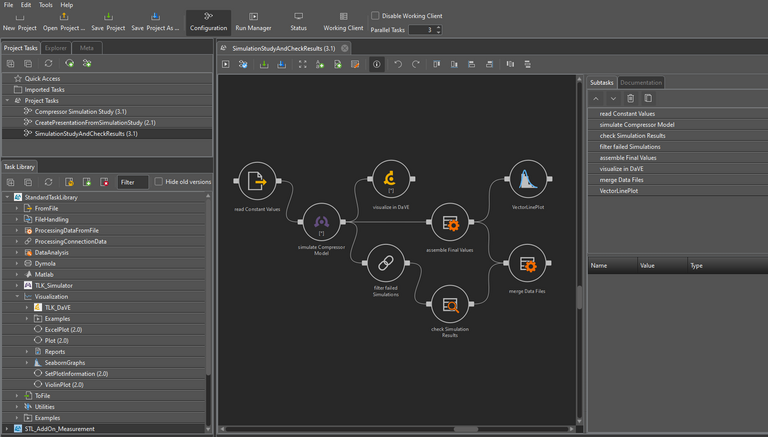Automation in Simulation
The simulation of components and systems contains many repetitive steps that take up a significant part of the development time of a product. These include, for example, the analysis and visualization of simulation results and the optimization of parameters. To support these processes and thus shorten development times, we offer our customers individually tailored automation of their workflows.
For our customers, we create workflows and input interfaces that are tailored to personal development processes and easy to maintain. They are based on our proprietary software MoBA Automation. We automate in a customized, fast, cost-efficient, and transparent way workflows from the field of component and system simulation, such as:
Simulation studies
Execution of large parametric studies with complex system models created for example, from TIL Suite, and visualization of results. Models exported as FMU are calculated internally in MoBA using Simulator Suite
Model reduction
Creation of fast neural networks from the results of simulation studies of complex models including adjustment in transient simulations
Parameter estimation
Fitting of model parameters based on measured data with ModelFitter
Topology optimization
Time saving determination of optimal topologies in a computer network using our Optimization Suite
Model analysis
Execution of linear point analyses, regressions, and relative gain array analyses
Data visualization
Generation of image files in a variety of chart types, from Excel or our visualization software DaVE
Report generation
Generation of PDF or PowerPoint reports with study boundary conditions and automatically generated diagrams
When automating workflows for customers, TLK-Thermo relies on its proprietary software MoBA Automation. This software is particularly suitable for automating individual workflows in the areas of simulation, measurement, and software development. Many TLK products can be used directly with MoBA Automation.
MoBA Automation enables our customers to independently automate their own processes. For many use cases, workflows are already available that can be directly provided with individual data in the graphical user interface. With the help of the supplied library, our customers can create their own workflows. With a little programming experience, it is also possible to integrate your own Python scripts.


